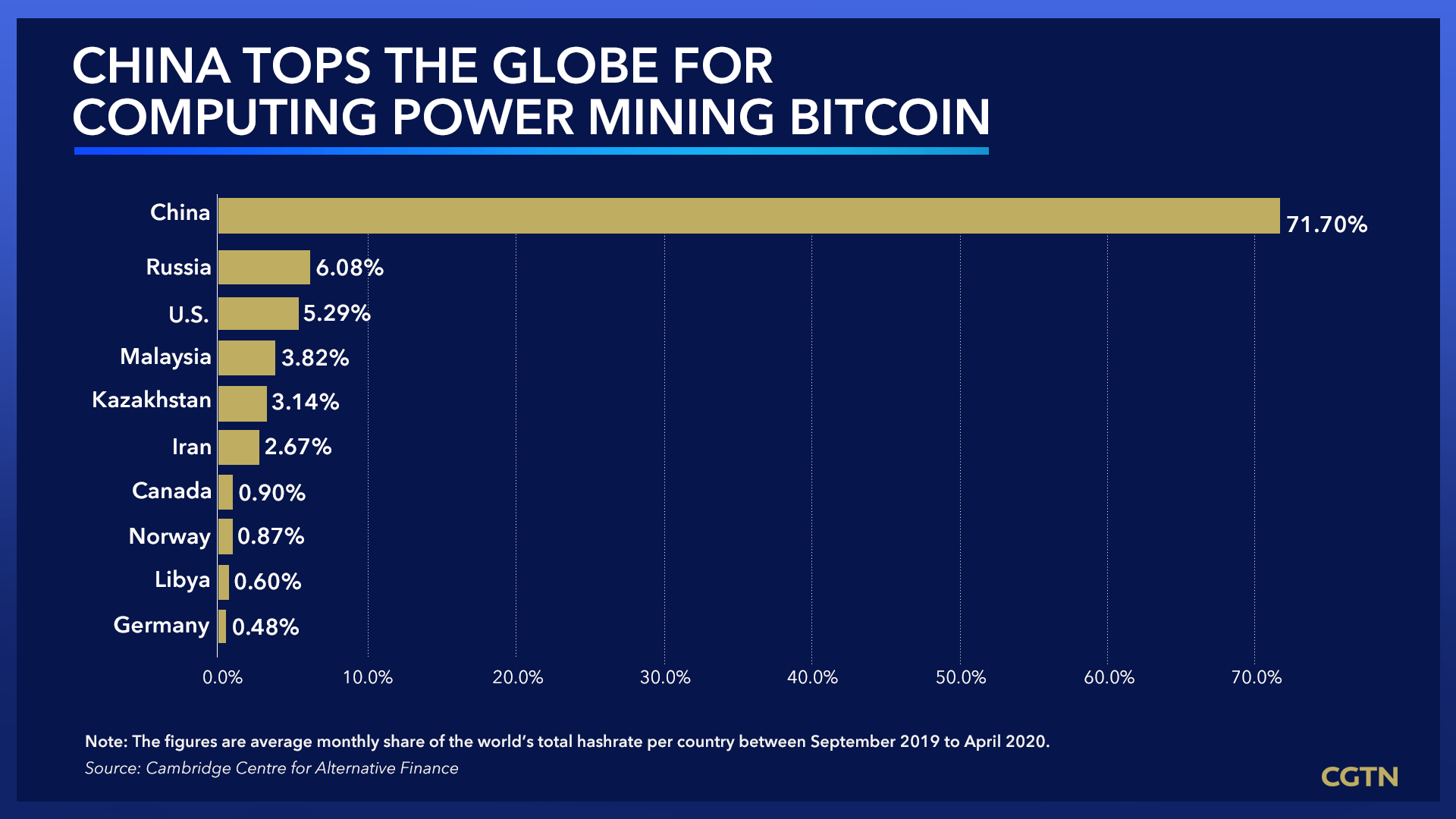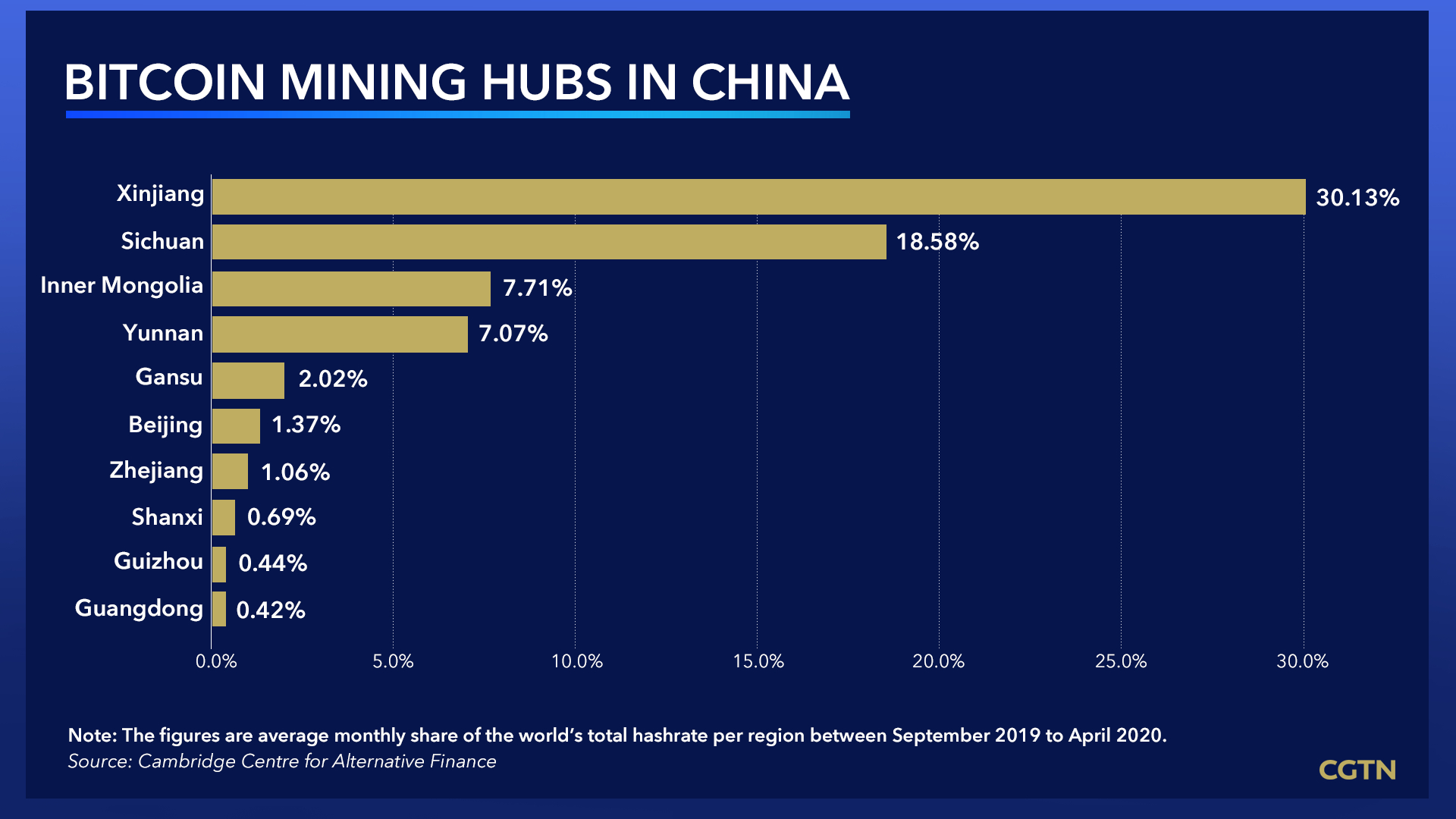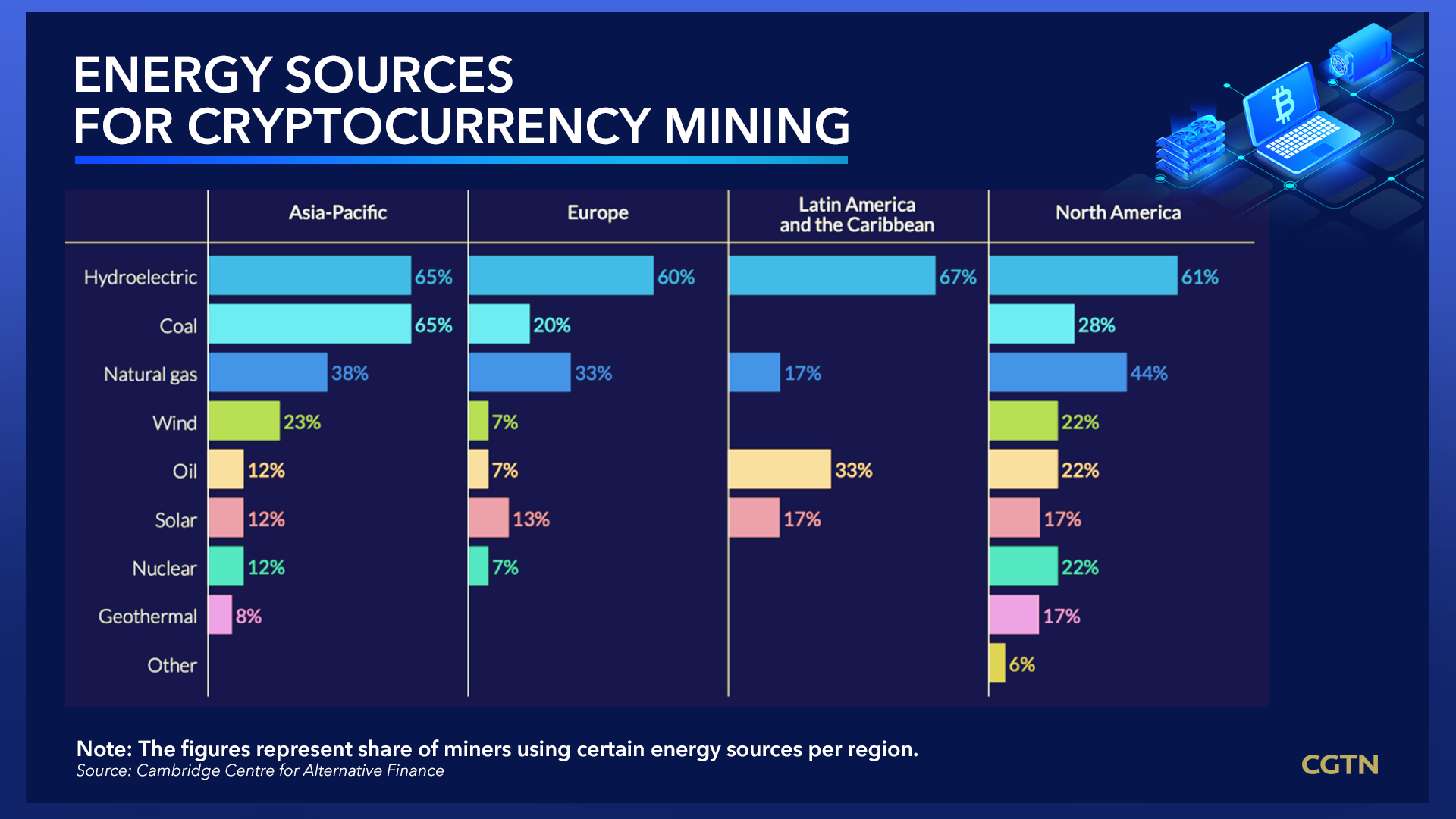05:22

China's Inner Mongolia's recent proposal to "clean up and shut down" all cryptocurrency mining operations by the end of April 2021 gave the already high-flying bitcoin's prices another boost.
With comparatively better investment returns than most traditional assets during the COVID-19 pandemic, Bitcoin has been under the spotlight in the financial market. A year ago, one bitcoin would cost about $6,000. However, today, its price hovers around $55,000, nine times what it was year on year, even reaching over $61,000 at one point.
China is the world's largest producer of bitcoin, according to data from Cambridge Centre for Alternative Finance (CCAF). Inner Mongolia accounted for 7.71 percent of the world's computing power for bitcoin between September 2019 and April 2020, even higher than the United States, which accounted for only 5.29 percent over the same period.


Greater accessibility to hardware
Increasing computational difficulties for mining cryptocurrency necessitates the utilization of specialized hardware for strong computing power.
For bitcoins, the hardware includes a graphics processing unit (GPU) or an application-specific integrated circuit (ASIC) miner designed for the sole purpose of mining.
A cost structure from a CCAF report comparing Chinese and U.S. miners seems to confirm China's competitive edge in mining-machine acquisition.
The report attributed China's competitive edge to the concentration of hardware manufacturers, shorter supply chains and the absence of additional overseas shipping fees.
The CCAF data showed that 52 percent of ASIC manufacturers' total sales went to Chinese miners in 2019, dwarfing other regions, while 12 percent went to the U.S. and 9 percent Canada.
Energy-hungry mining
Besides capital expenditures, electricity costs comprise the lion's share of miners' operational expenditure.
According to the CCAF's estimation, bitcoin mining's annualized electricity consumption is near 140 terawatt-hours, more than that of entire countries, such as Argentina and the Netherlands.
Hydropower is the number one source of energy for miners worldwide, followed by coal and natural gas. Asia-Pacific miners equally rely on coal and hydropower. Renewable energy is still much less adopted as a power source.

China's Xinjiang and Inner Mongolia regions use coal as an energy resource for cryptocurrency, while southwestern China's Sichuan and Yunnan provinces use hydropower. All of them are electricity-abundant regions.
Cryptocurrency mining has drawn regulatory attention in China in recent years. In April 2019, China's National Development and Reform Commission put cryptocurrency mining on a preliminary list of industries it wanted to eliminate, citing concerns including energy-wasting and regulation. However, the final version released in November removed cryptocurrency mining from the list.
The primary purpose of Inner Mongolia's ban on all mining activities is to reduce carbon emissions. The region failed to meet China's energy consumption and energy intensity targets in 2019.
Although Inner Mongolia was the first to announce a ban on all cryptocurrency mining, it is not the highest consumer of computing power for bitcoin mining. Between September 2019 and April 2020, China's Sichuan Province accounted for 30.13 percent of the world's computing power for bitcoin mining activities, followed by Xinjiang with 18.58 percent.
Whether the two mining giants and other provinces will follow suit with bans of their own is not yet known. But for now, China remains the world's leading cryptocurrency producer.
Scriptwriter: Nadim Diab
Video editing: Wang Zengzheng
Graphics: Gao Hongmei and Du Chenxin

